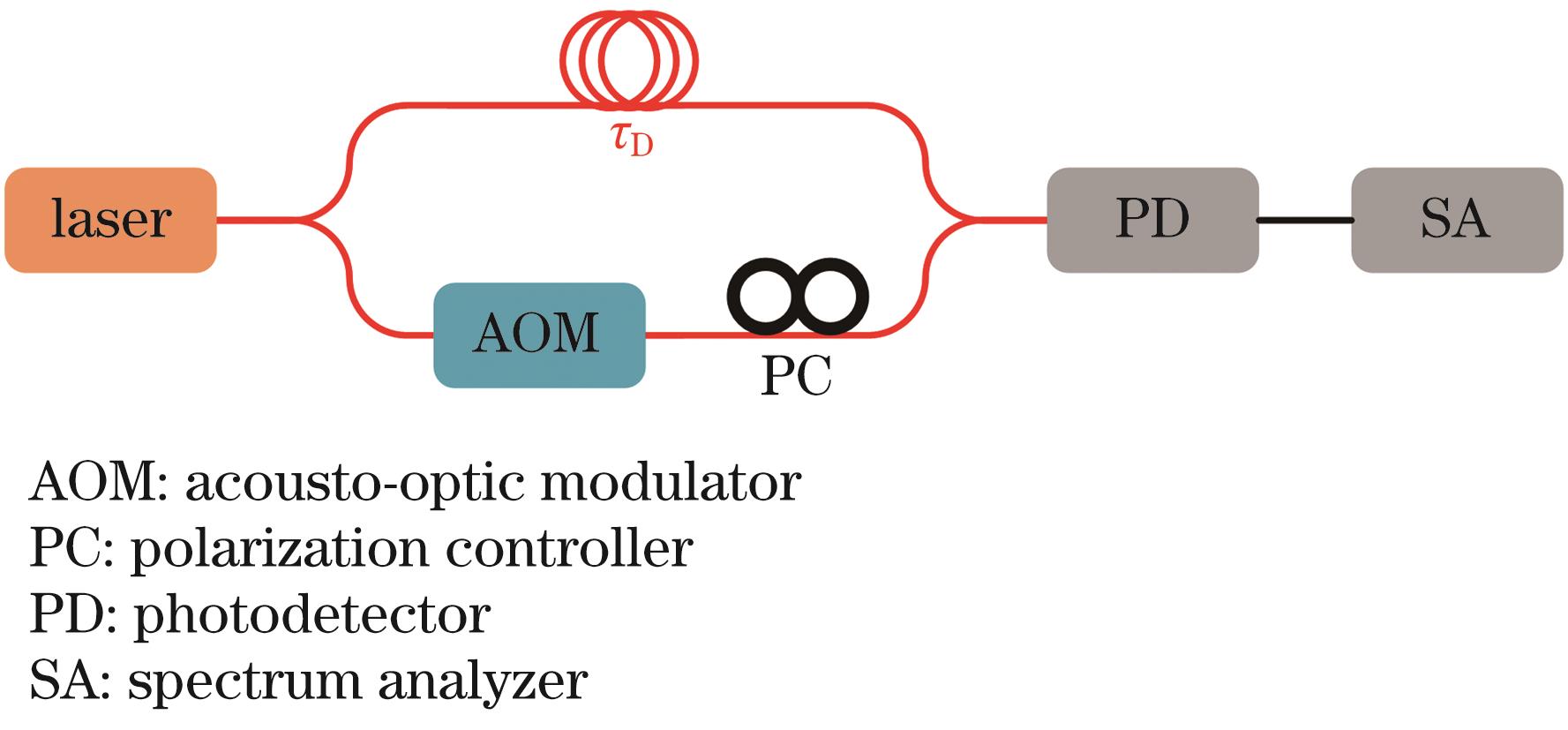Jiewei Yang, Tianxin Yang, Zhaoying Wang, Dongfang Jia, Chunfeng Ge. New Method for Calculating Signal‑to‑Noise Ratio Evolution of Coherent Detection System from Coherent to Incoherent Based on Frequency Noise Curves[J]. Chinese Journal of Lasers, 2025, 52(6): 0606005
Search by keywords or author
- Chinese Journal of Lasers
- Vol. 52, Issue 6, 0606005 (2025)

Fig. 1. Experimental setup diagram for self-heterodyne structure with different delay fiber lengths

Fig. 2. Schematic diagrams of logarithmic sampling algorithm. (a)‒(e) Influence of logarithmic sampling method on integral result under different τ values; (f) curve of exponential part of autocorrelation function under white noise
Fig. 3. Comparison between analytical solution and numerical integration result using logarithmic sampling method
Fig. 4. Self-heterodyne detection results of DFB-LD1 under different time-delay fiber lengths. (a) Frequency noise curve of DFB-LD1; (b) power spectrum curves of beat signals under different fiber lengths; (c) power spectrum curves of beat signal under 50 m time-delay fiber length
Fig. 5. Signal-to-noise ratio of DFB-LD1 versus fiber length in coherent detection system
Fig. 6. Self-heterodyne detection results of DFB-LD2 under different time-delay fiber lengths. (a) Frequency noise curve of DFB-LD2; (b) power spectrum curves of beat signals under different time-delay fiber lengths; (c) power spectrum curves of beat signal under 20 m time-delay fiber length
Fig. 7. Dynamic change of SNR of beat signal
|
Table 1. SNR of DFB-LD2 at 35 kHz carrier frequency offset versus fiber length in coherent detection system

Set citation alerts for the article
Please enter your email address



